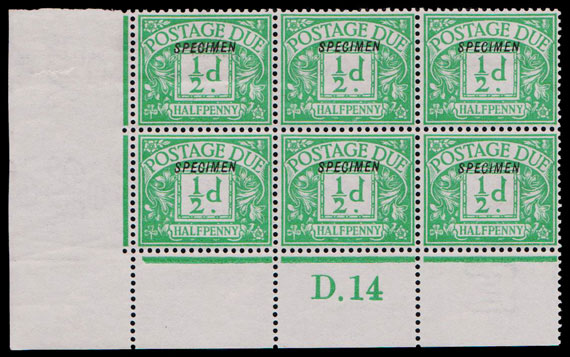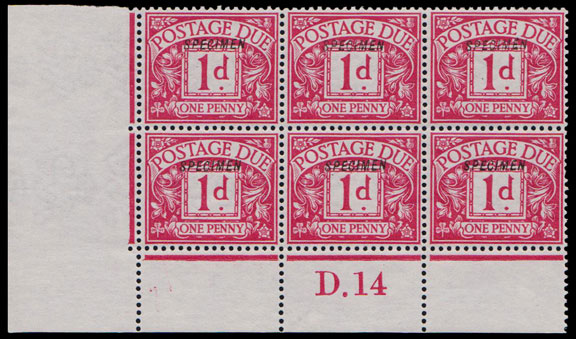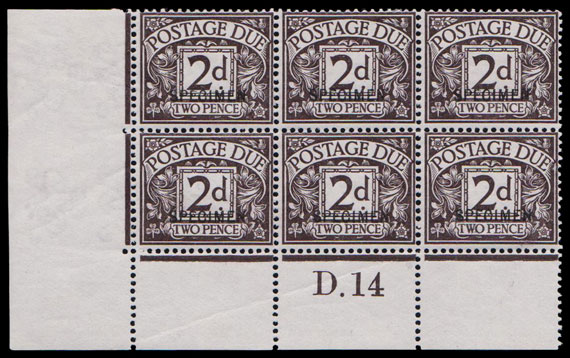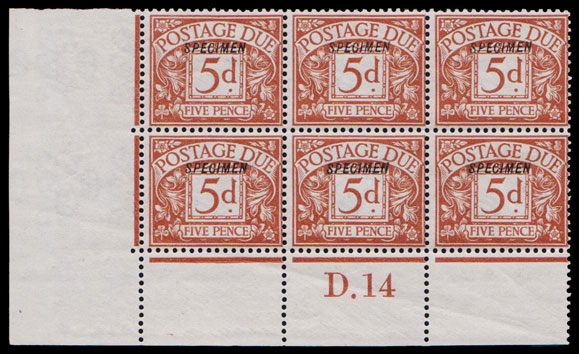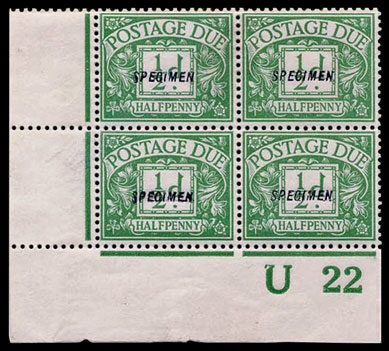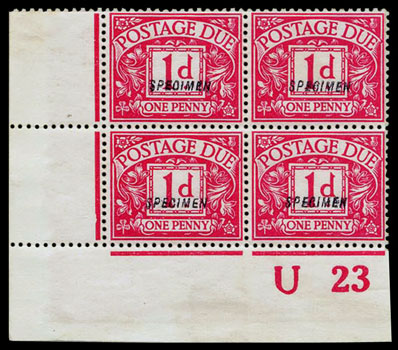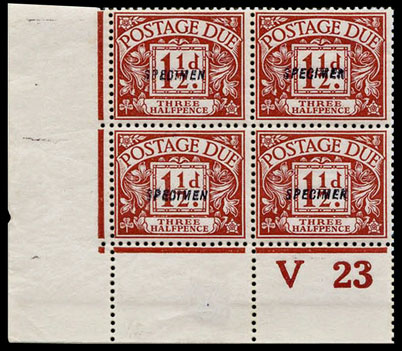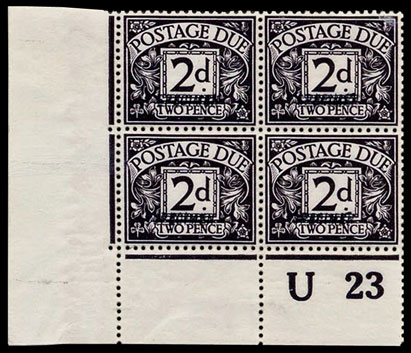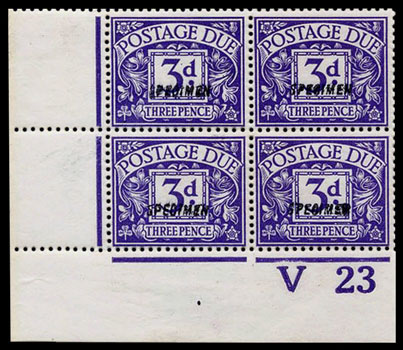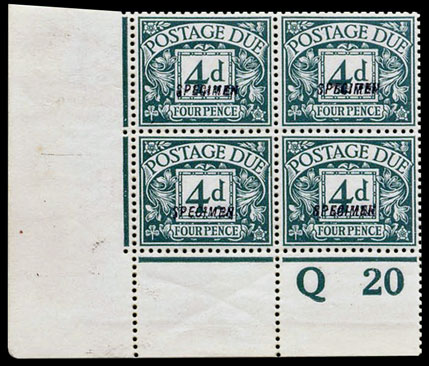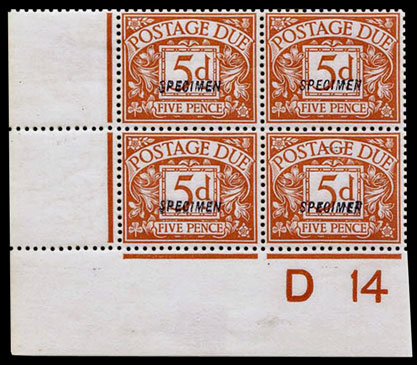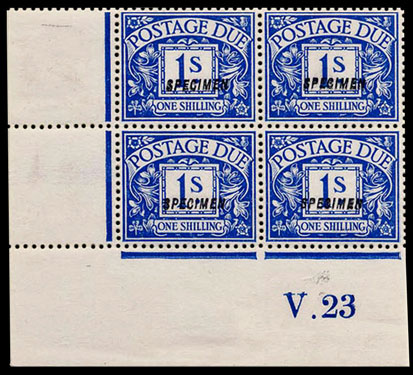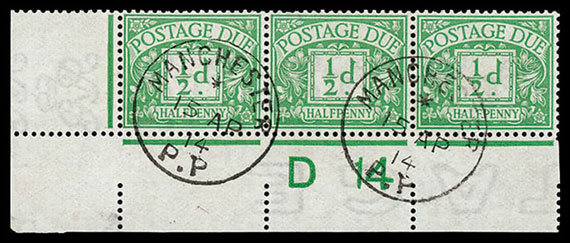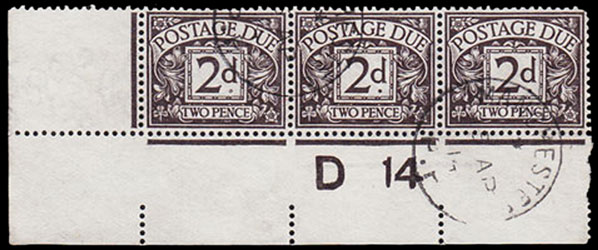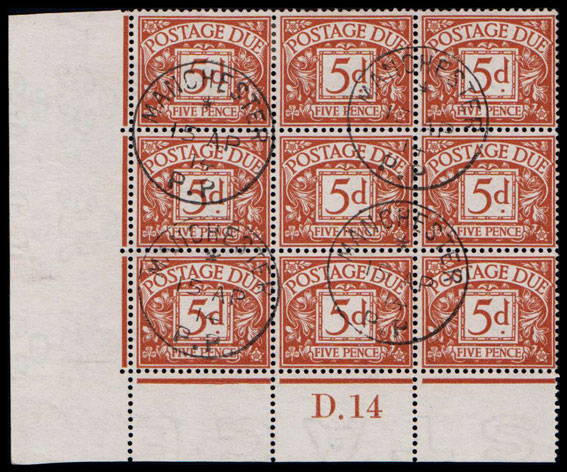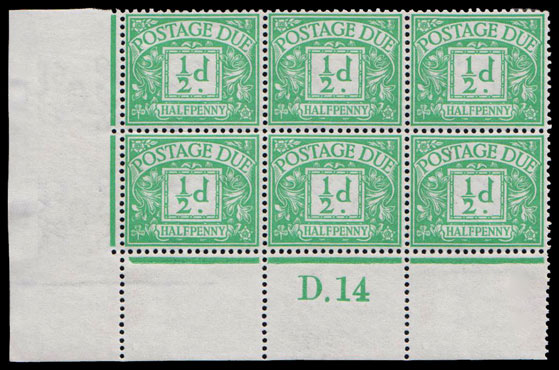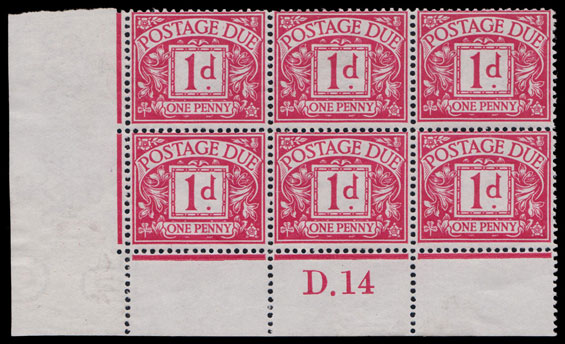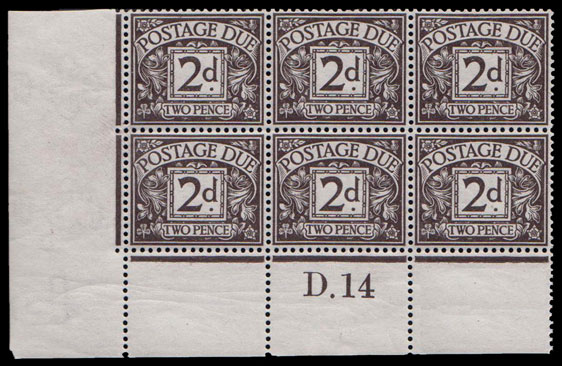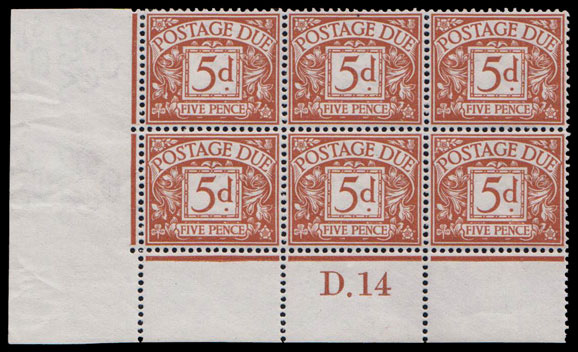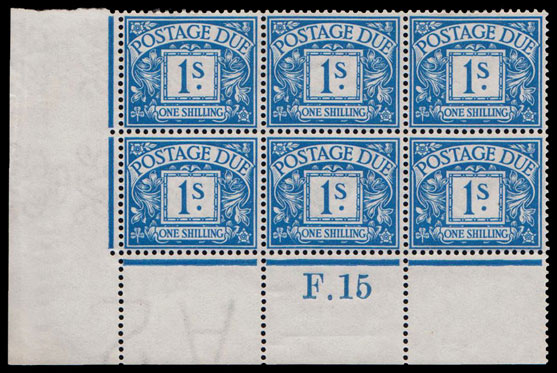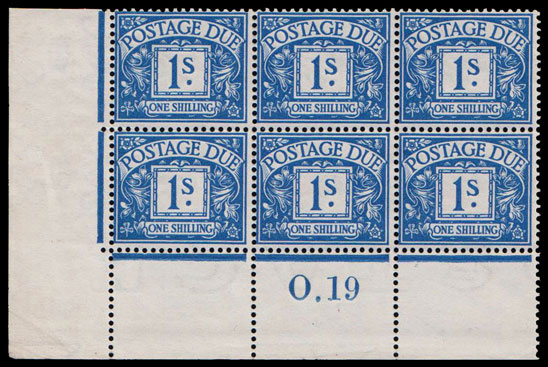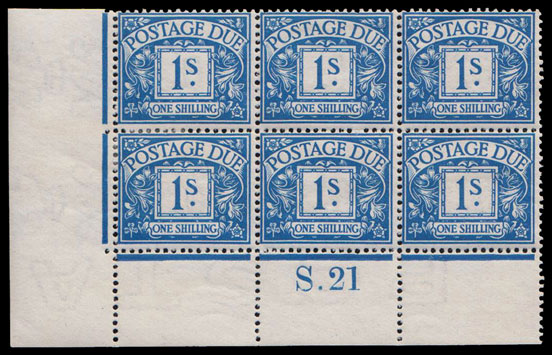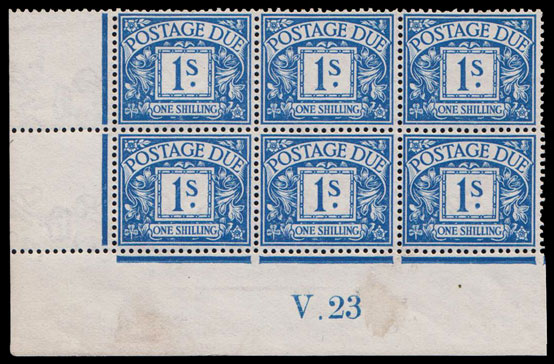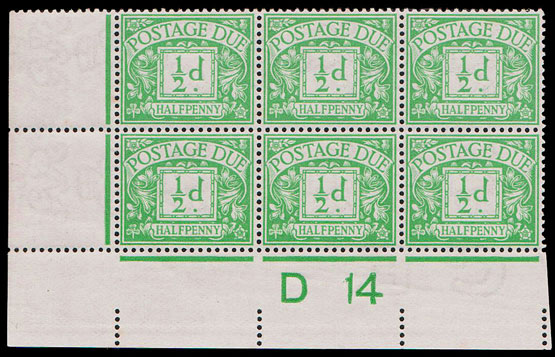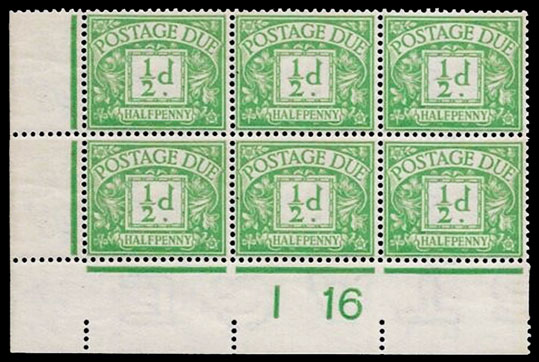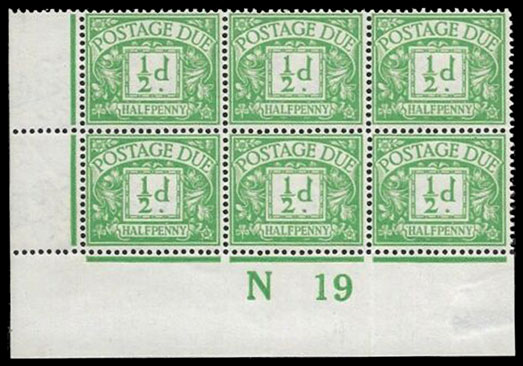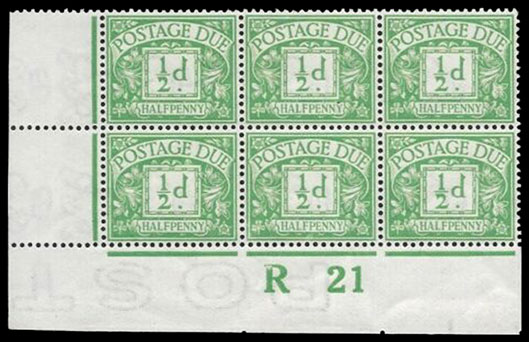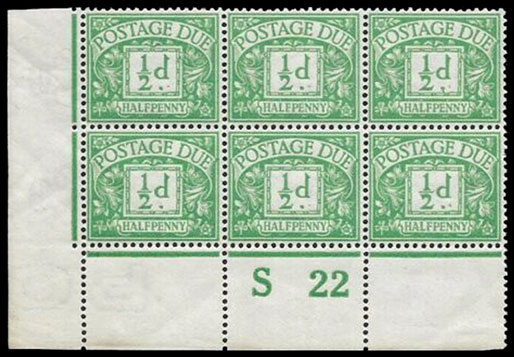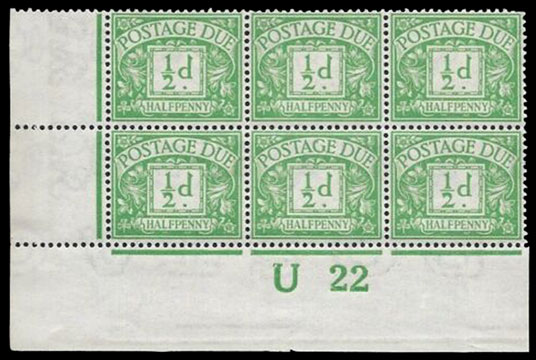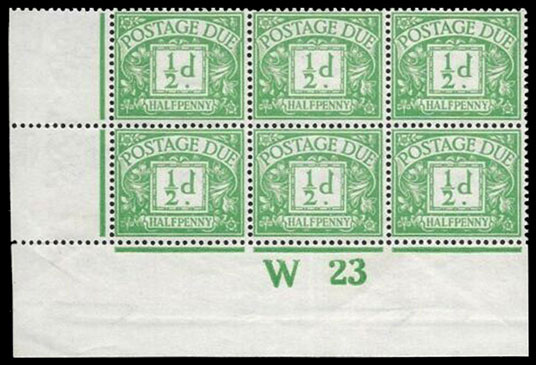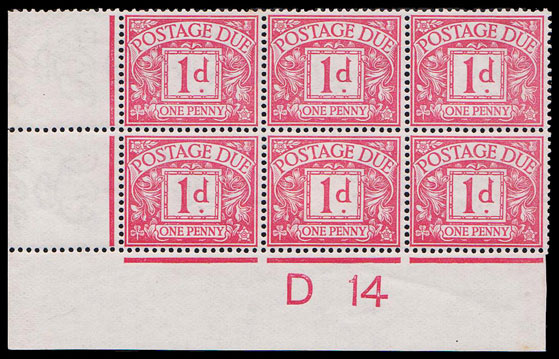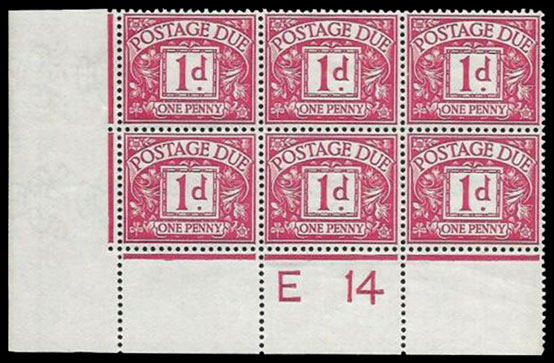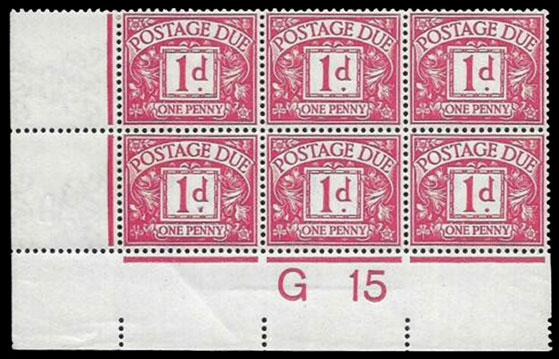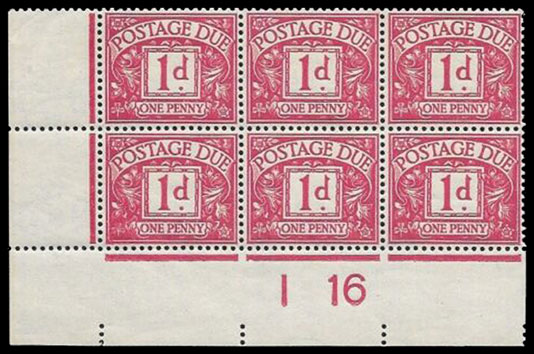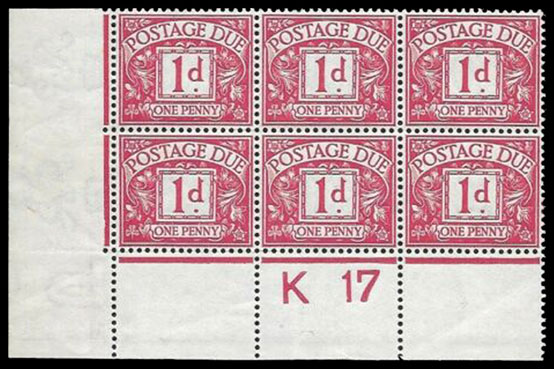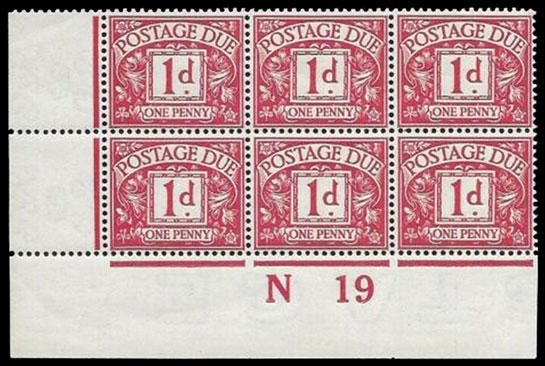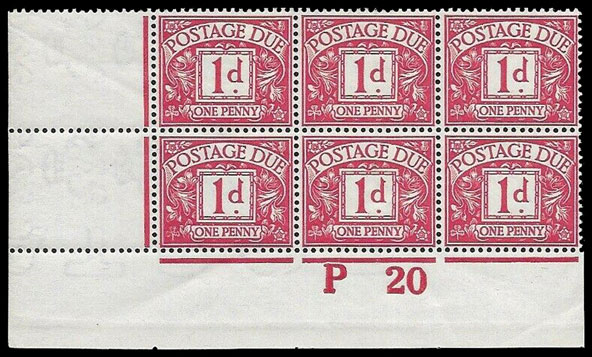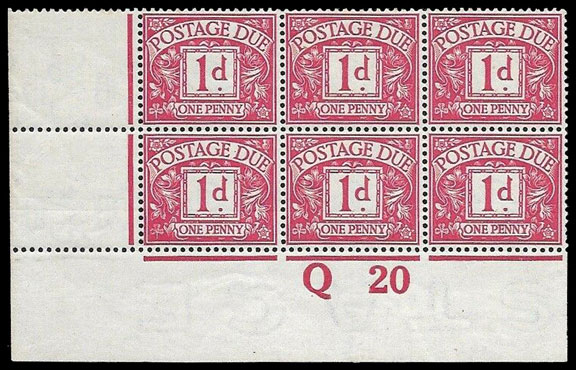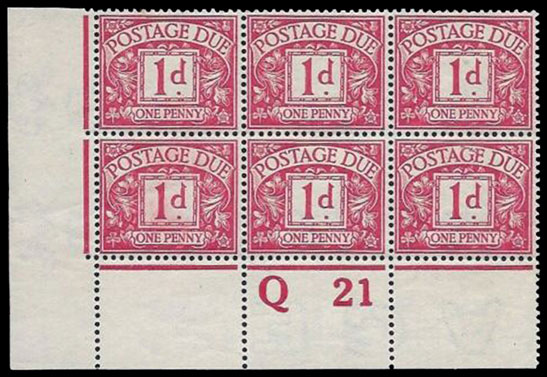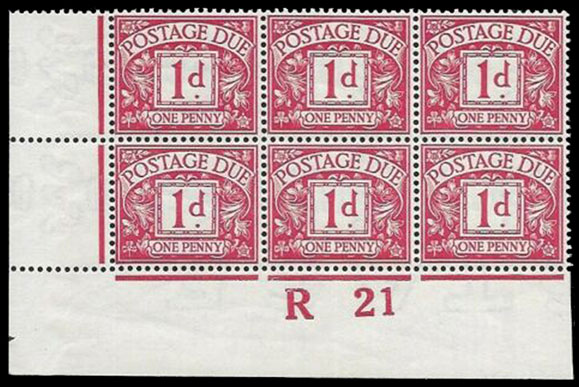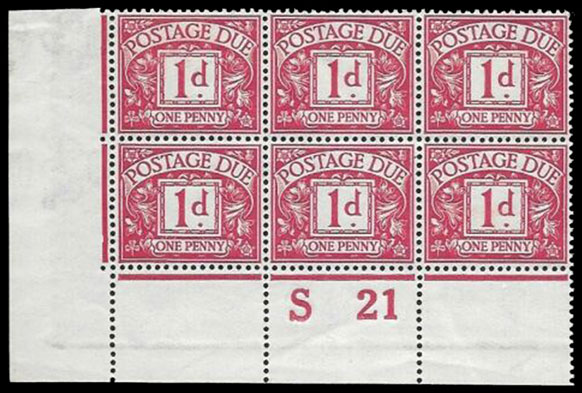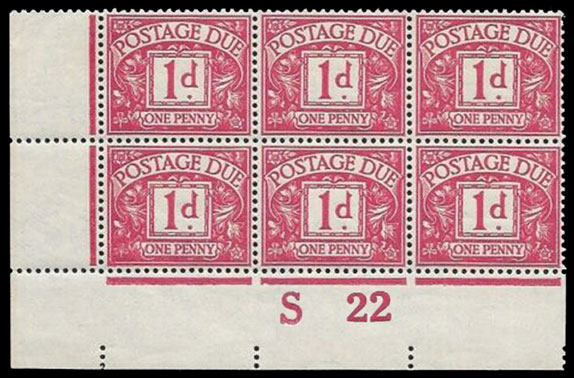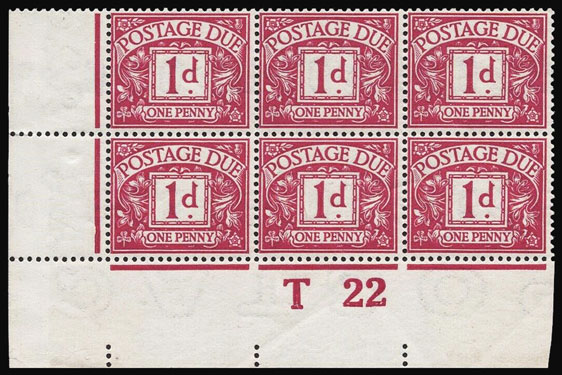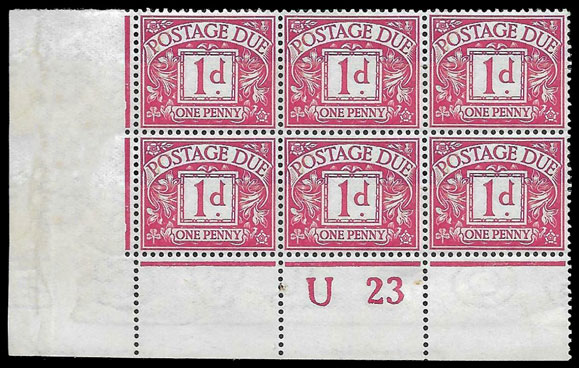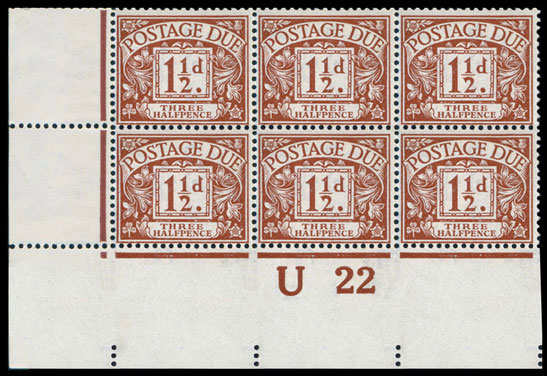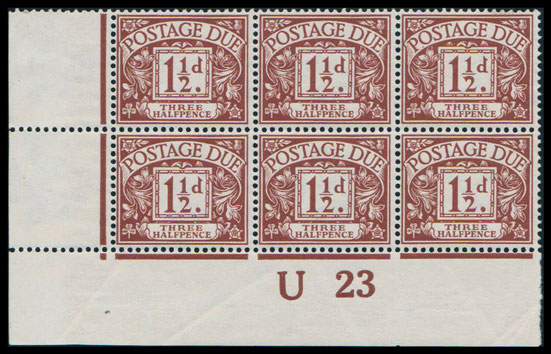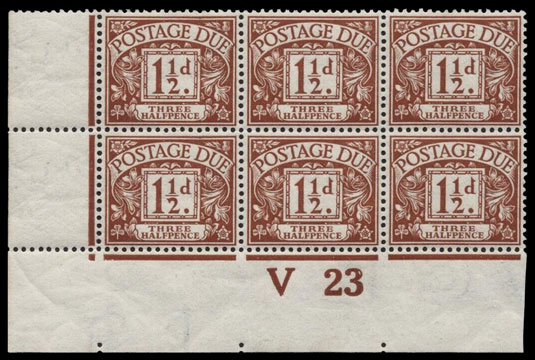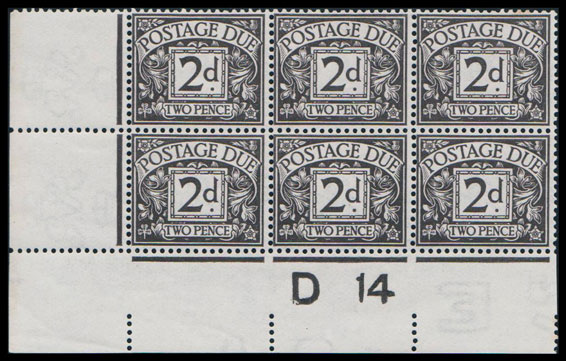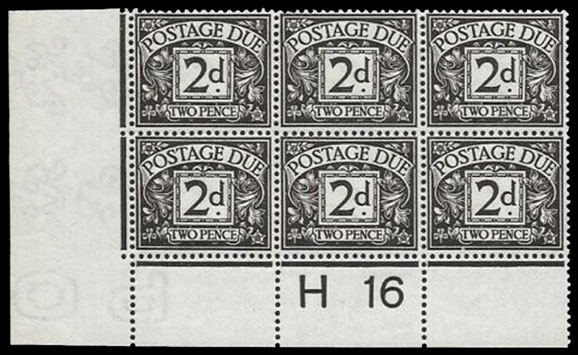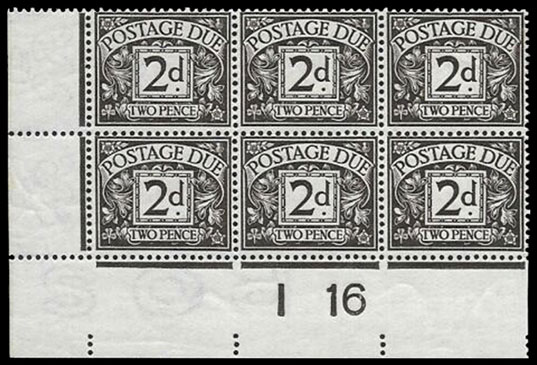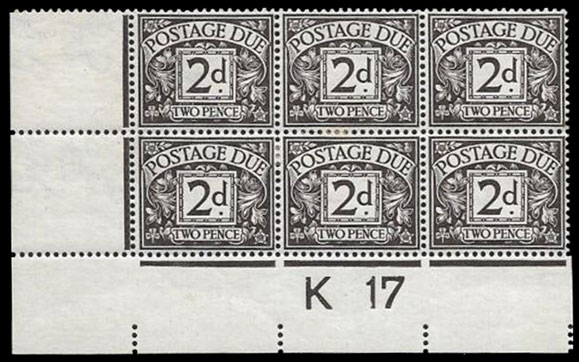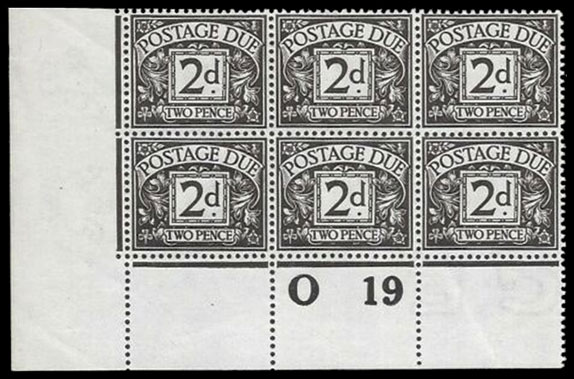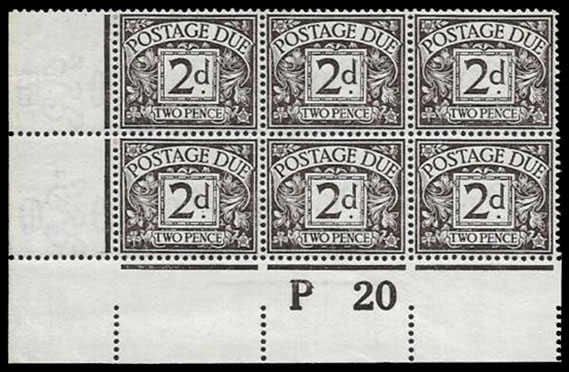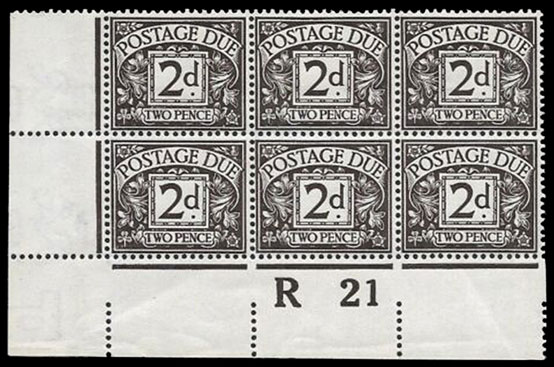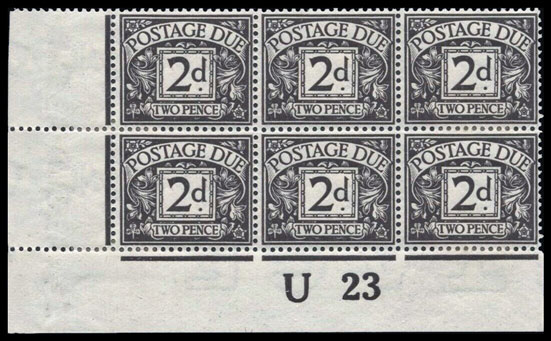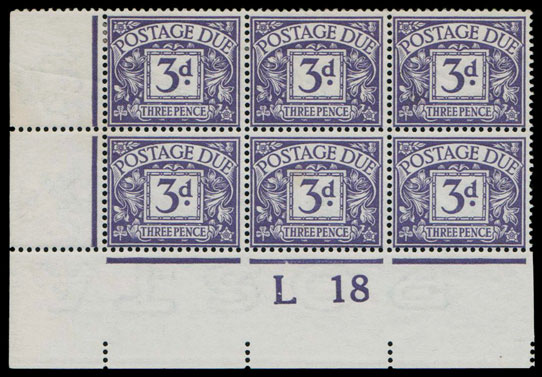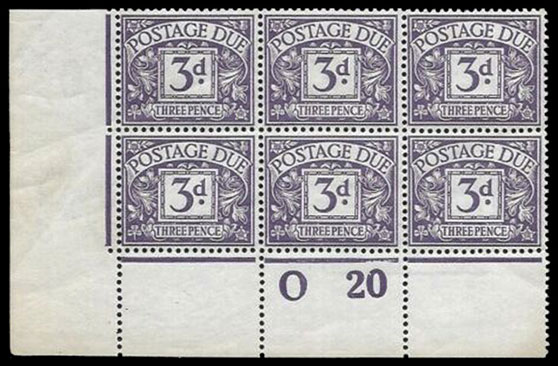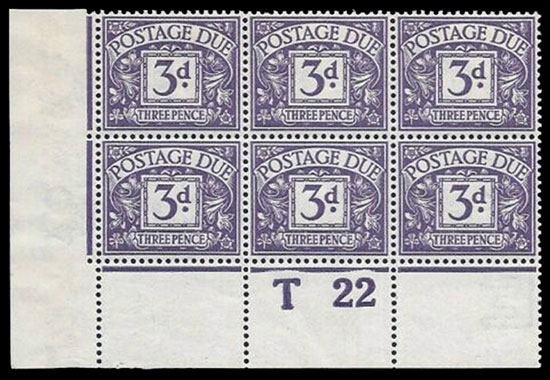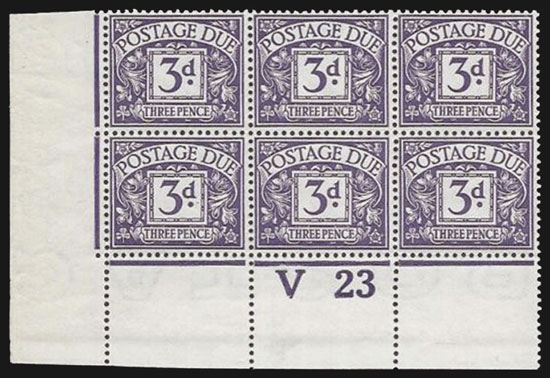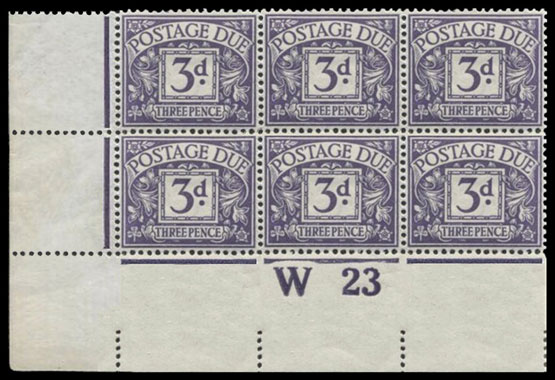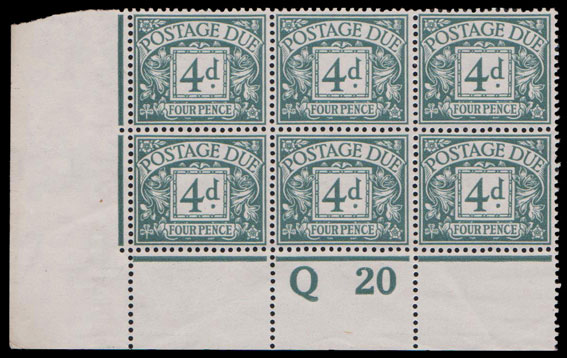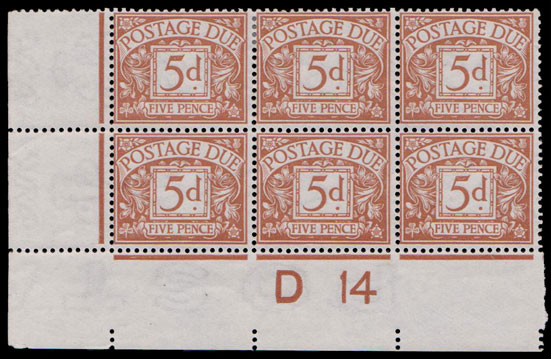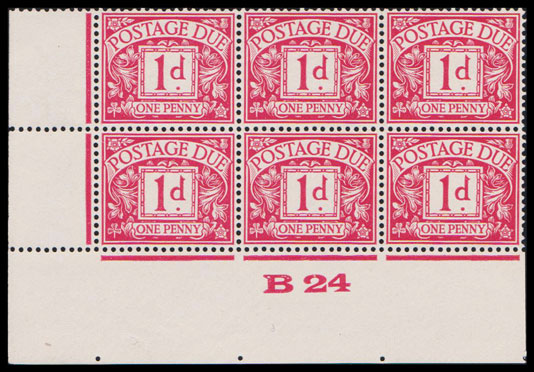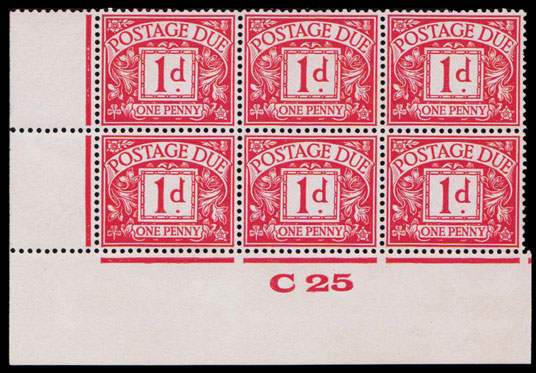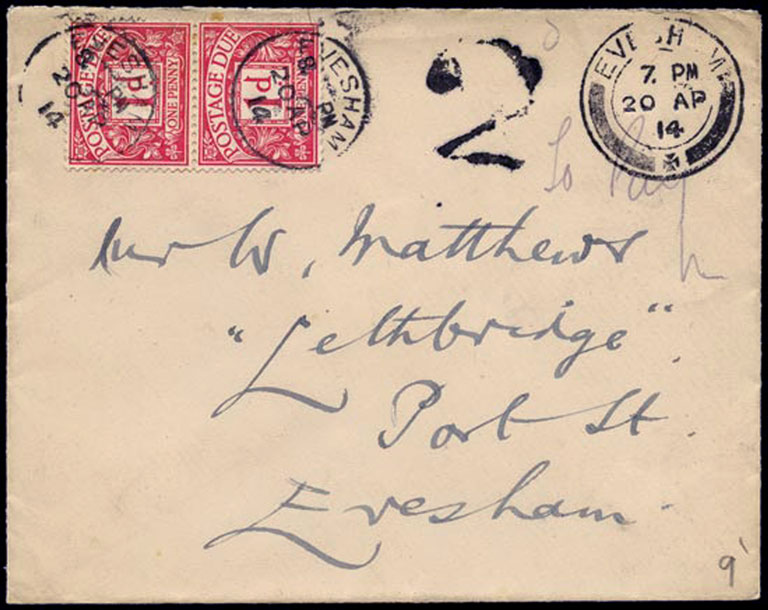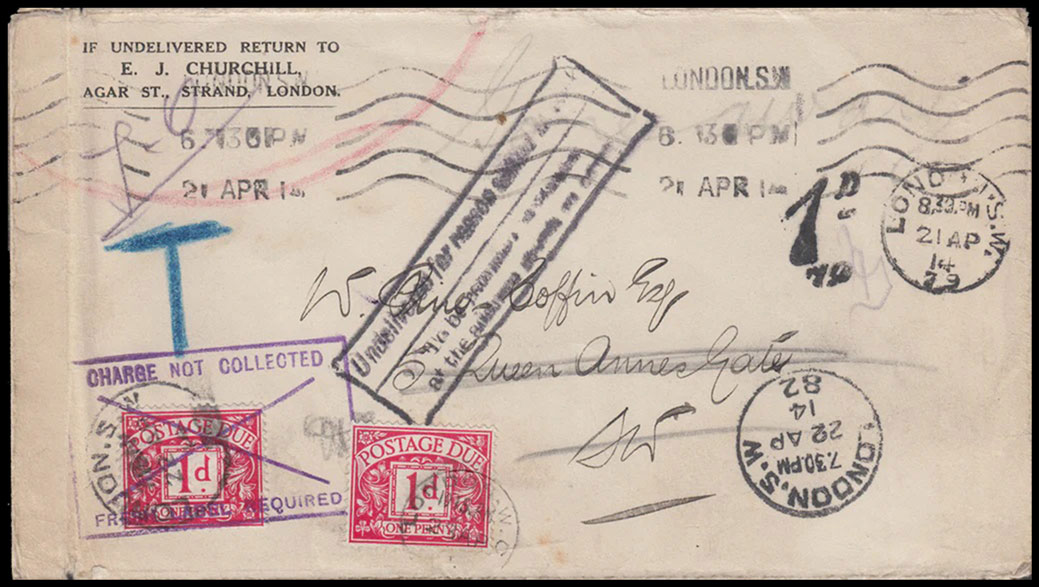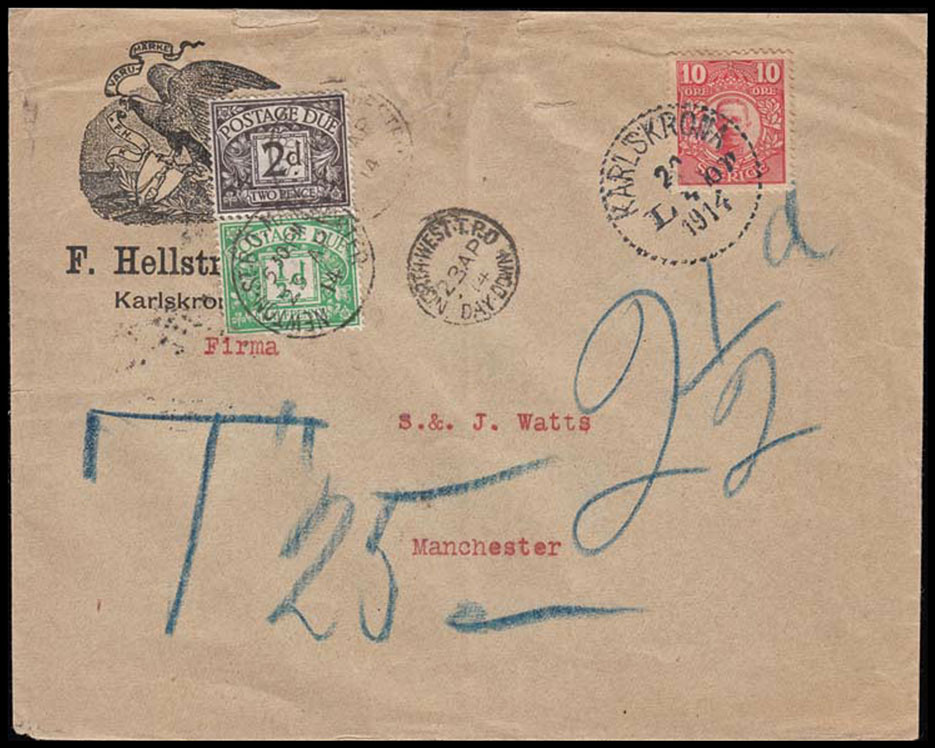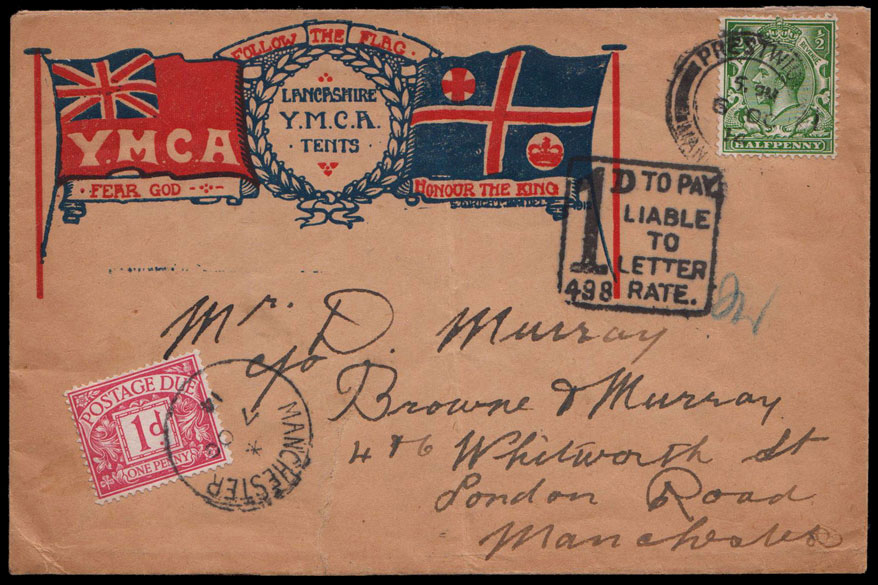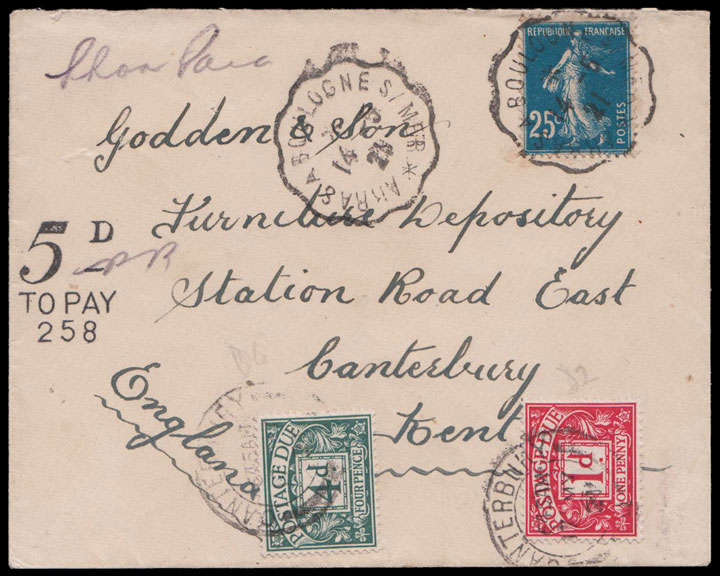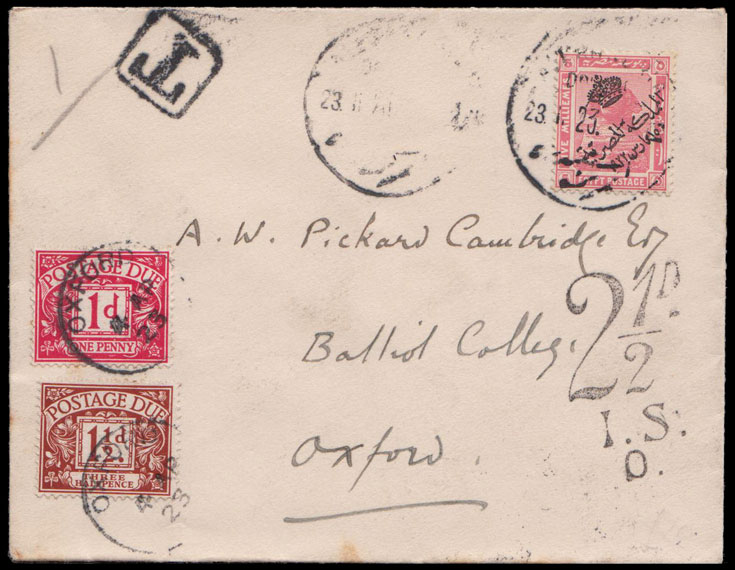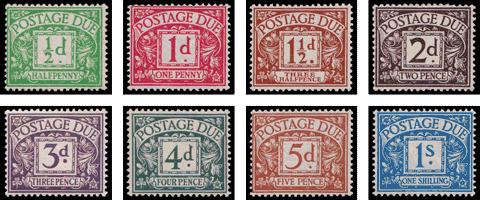
Four denominations were issued on 20 Apr 1914: ½d (return-to-sender rate), 1d (double the postcard rate), 2d (double the inland letter rate), and 5d (double the foreign letter rate). These were followed by a 1s label in 1915 (for parcels returned from abroad and for batches of charged packets). Rate increases created the need for a 3d label in 1918, and a 4d label in 1920.
The 1½d label was needed after the 7th UPU congress in Madrid (1920) agreed a minimum international surcharge of 30 centimes (1½d). The rate was effective 13 June 1921, but a 1½d label was not available until 10 Jan 1923. The rate was reduced to 10 centimes (1d) four years later at the 8th congress in Stockholm (1924); hence, the 1½d label was withdrawn in 1925. The UPU further reduced the rate to 5 centimes (½d) at the 10th congress in Cairo (1934).
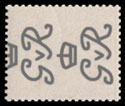
Sideways
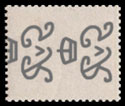
Sideways
Reversed
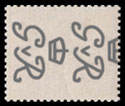
Sideways-inverted
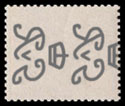
Sideways-inverted
Reversed
Watermarks shown as seen from the front of the stamp.
Preliminary printings of the ½d, 1d, 2d, and 5d were made at Somerset House, then by Harrison & Sons. The printings can only be distinguished when they have control letters attached, the Somerset House printings having a dot after the letter, and they are usually sideways-inverted. Of the other denominations, the 1s was printed only at Somerset House, and the 1½d, 3d, and 4d were printed only by Harrison.
| ½d | Emerald | 20 Apr 1914 |
| 1d | Carmine | 20 Apr 1914 |
| 1½d | Chestnut | 10 Jan 1923 |
| 2d | Agate | 20 Apr 1914 |
| 3d | Violet | 3 June 1918 |
| 4d | Dull Grey-green | 21 Dec 1920 |
| 5d | Brownish Cinnamon | 20 Apr 1914 |
| 1s | Bright Blue | 22 June 1915 |
All are known sideways-inverted.
½d and 1d are known with all four watermark directions.
2d, 3d, and 1s are known sideways-inverted reversed.
½d, 1d, and 2d are known without watermark.

It has been noted elsewhere that the serif on the “d” in the 3d slopes in the opposite direction from the other values, usually attributed to a lack of consistency. The “d” is also smaller. These are more likely design choices made to balance the overall look of the value tablet.
Specimens
Stamps were overprinted “Specimen” or “Cancelled” for a variety of reasons including reference copies, trial printings, and colour standards. Some are common, Type 23 came to market as complete sheets, others are scarce, some with only a single copy recorded.
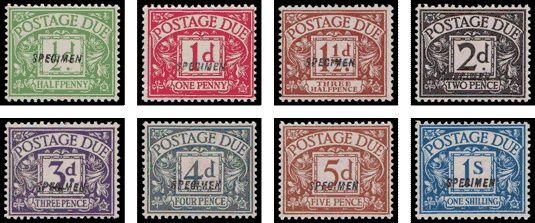
Overprinted “Specimen” Type 23.

Overprinted “Specimen” Type 26.
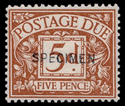
Overprinted “Specimen” Type 30.
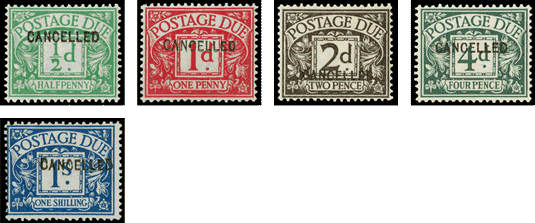
Overprinted “Cancelled” Type 24.
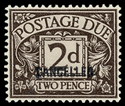
Overprinted “Cancelled” Type 33.
Click the images to enlarge.
Varieties
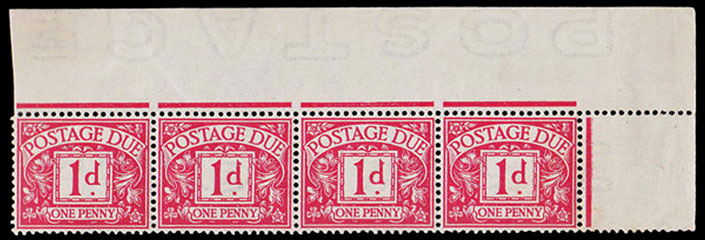
Watermark “POSTAGE” upright across the stamps and inverted in the top margin.
Also known with “POSTAGE” inverted on the 1d, and upright on the 2d.
These blocks were used in Manchester on 15 Apr 1914, five days before the issue date of 20 Apr.
The 1d is known bisected at:
Barrhead (1922); Bristol (1918); Cowbridge, Glamorgan (1916); Cowes (1923); Elgin (1921); Kidlington (1922, 1923); Kilburn, London NW (1923); Malvern (1915); Palmers Green, London N (1922); Plaistow, London E (1916); River, Dover (1922); Rock Ferry, Birkenhead (1915, 1918); St Ouens, Jersey (1924); Salford, Manchester (1914); South Tottenham, London N (1921); Warminster (1922); Wavertree, Liverpool (1921); Whitchurch (1922); Winton, Bournemouth (1921); Wood Green, London N (1921).
The 2d is known bisected at:
Anerley, London SE (1921); Bethnal Green, London E (1918); Christchurch (1921); Didcot (1919); Ealing, London W (1921); Hythe, Southampton (1923); Kirkwall (1922); Ledbury (1922); Malvern (1921, 2923); Sheffield (1921); Shipley (1922); Streatham, London SW (1921); Victoria Docks & North Woolwich (1921); West Kensington, London W (1921, 1922).
The 3d is known divided at:
Malvern (trisected, 1921); Warminster (bisected, 1922).
Control Blocks
Somerset House Printings
Click the images to enlarge.
| ½d | 1d | 1½d | 2d | 3d | 4d | 5d | 1s | |
| D.14 | P | P | P | P | ||||
| F.15 | P | |||||||
| O.19 | P | |||||||
| S.21 | P | |||||||
| V.23 | I |
I: Imperforate P: Perforated bottom margin
Harrison Printings
Click the images to enlarge.
| ½d | 1d | 1½d | 2d | 3d | 4d | 5d | 1s | |
| D14 | I P | I P | I P | I P | ||||
| E14 | I P | |||||||
| F15 | ||||||||
| G15 | I P | |||||||
| H16 | I P | |||||||
| I16 | I P | I P | I P | |||||
| K17 | I P | I P | ||||||
| L18 | I P | |||||||
| N19 | I P | I P | ||||||
| O19 | I P | |||||||
| O20 | I P |
| ½d | 1d | 1½d | 2d | 3d | 4d | 5d | 1s | |
| P20 | I | I P | ||||||
| Q20 | I | I P | ||||||
| Q21 | I P | |||||||
| R21 | I P | I P | I P | |||||
| S21 | I P | |||||||
| S22 | P | I P | ||||||
| T22 | I P | I P | ||||||
| U22 | I P | I | ||||||
| U23 | I P | I | I P | |||||
| V23 | I P | I P | ||||||
| W23 | I P | I P |
I: Imperforate P: Perforated bottom margin
Waterlow Printings
On thick chalk-surfaced paper.
Click the images to enlarge.| ½d | 1d | 1½d | 2d | 3d | 4d | 5d | 1s | |
| B24 | I | |||||||
| C25 | I |
I: Imperforate P: Perforated bottom margin
Covers
Click the images to enlarge.
